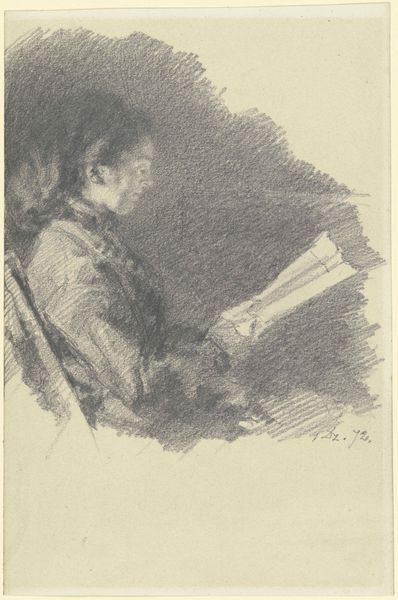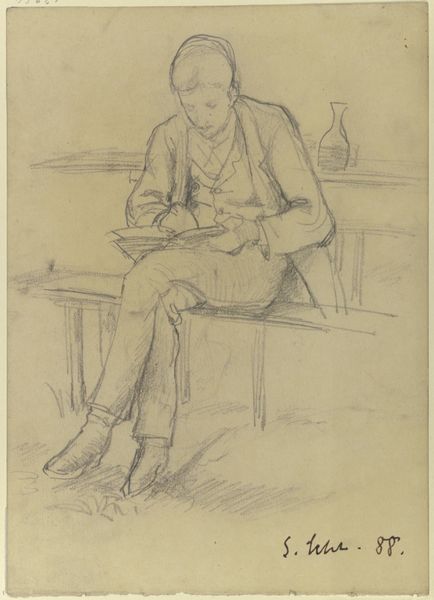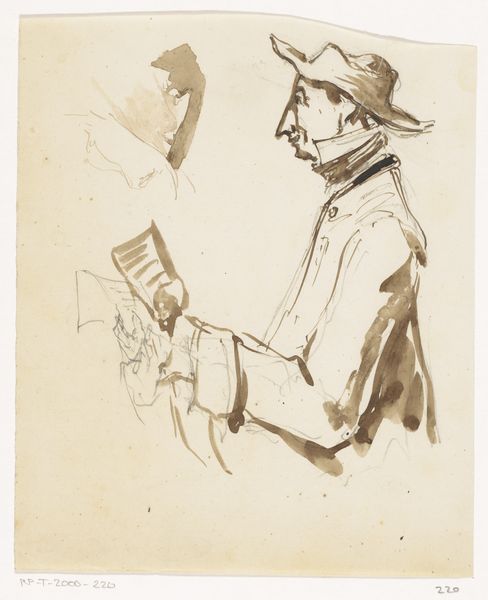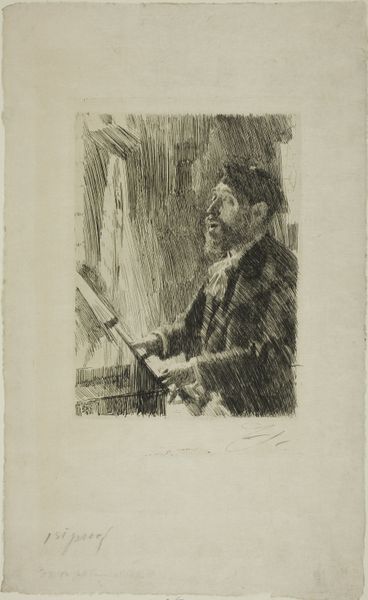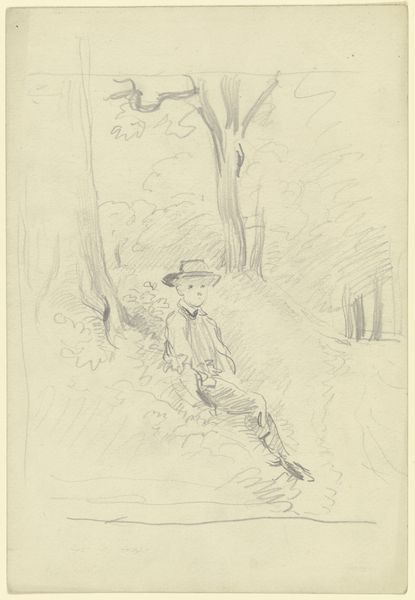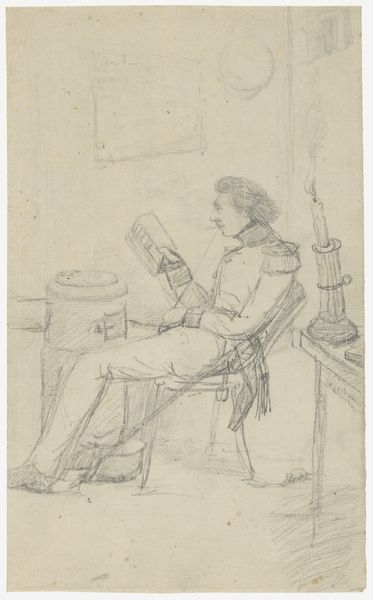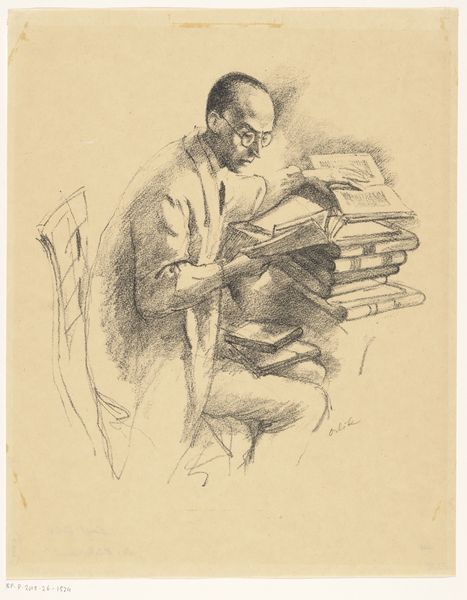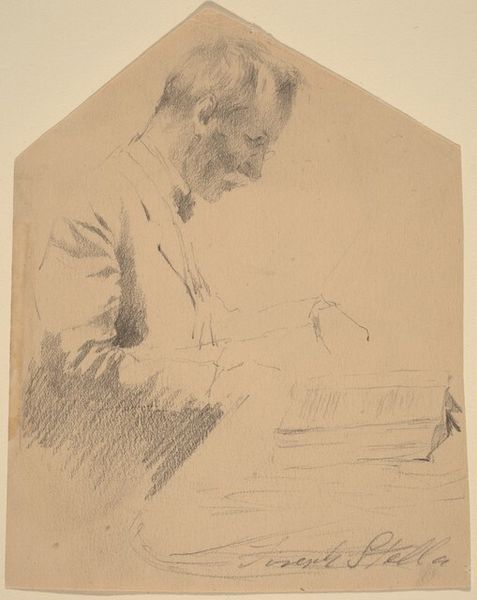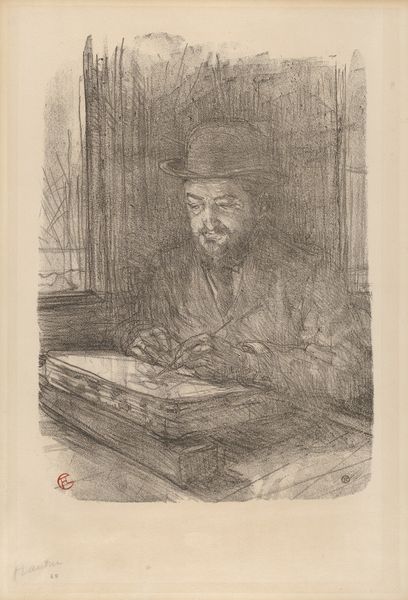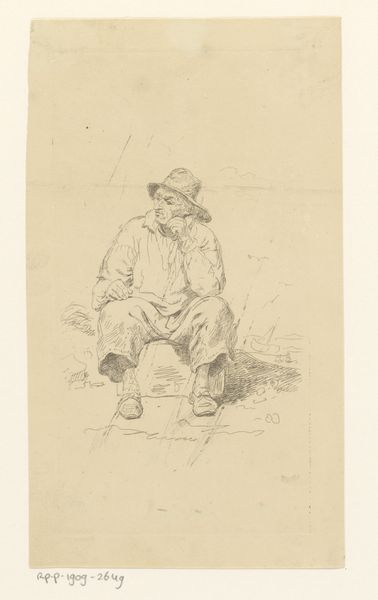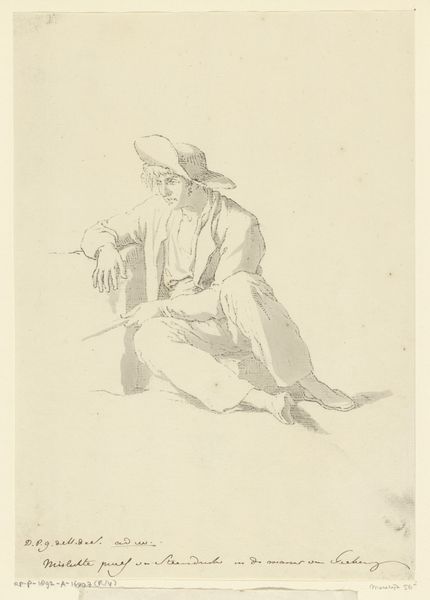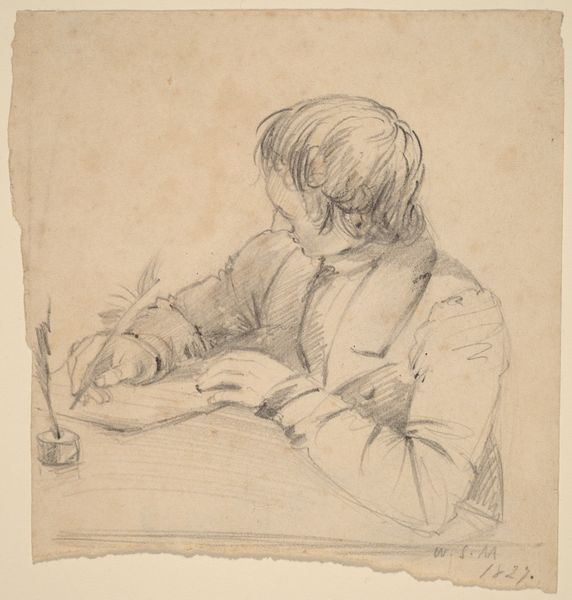
drawing, paper, pencil
#
portrait
#
drawing
#
16_19th-century
#
self-portrait
#
paper
#
pencil
Copyright: Public Domain
Editor: Here we have Emil Rumpf's "Portrait of Philipp Rumpf," a pencil drawing on paper located at the Städel Museum. The subdued palette and the subject's posture give it a very intimate and contemplative feel. What stands out to you when you look at this drawing? Curator: I see more than just a father captured in a moment of quietude. I see the intersecting threads of family, artistic legacy, and the politics of representation. The gaze is directed downwards, at work. But what kind of work? Artistic, intellectual, or labor in the conventional sense? Editor: I guess I hadn't really considered that! He seems very absorbed in whatever he’s doing… maybe even escaping. Curator: Precisely. Escapism, the artist looking inwards... we should always consider the role of social class. A work like this may reveal more than the artist intended. In the context of the 19th century and burgeoning artistic self-awareness, the seemingly private act of drawing a portrait becomes a public declaration, asserting the family's presence and status within a shifting societal landscape. Is he truly escaping or solidifying a certain ideology through the artwork? Editor: So, this intimate sketch acts as a kind of historical marker, revealing class aspirations and maybe even tensions of the era? Curator: Exactly. This quiet portrait speaks volumes about the politics embedded within the personal. Consider also what remains unseen. What societal pressures is the artist implicitly rebelling against, or conversely, upholding? Editor: I hadn’t really considered how many layers there were here beyond just a simple portrait. Curator: And hopefully you'll always remember to dig deeper! Editor: Absolutely! Thanks for broadening my perspective.
Comments
No comments
Be the first to comment and join the conversation on the ultimate creative platform.
